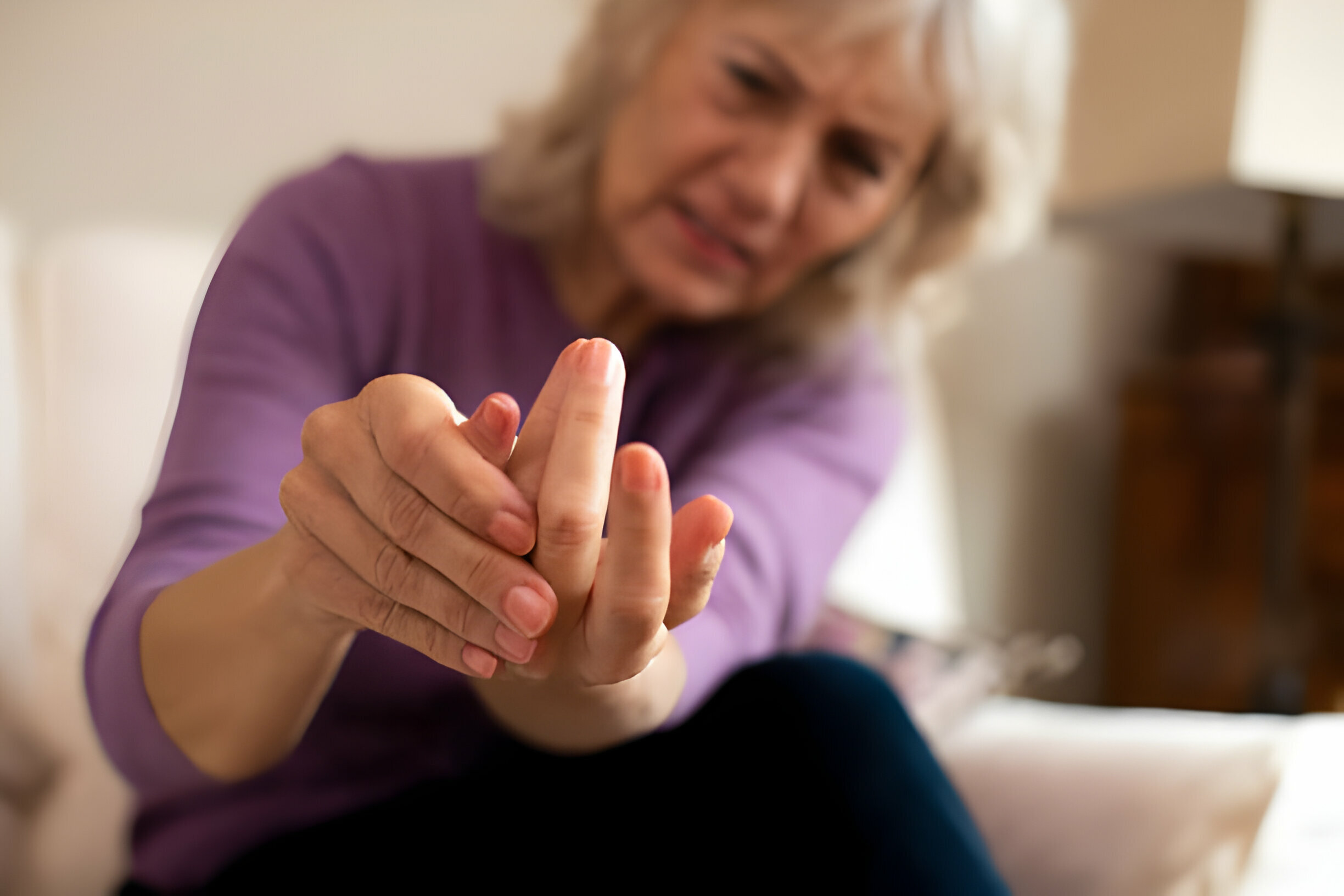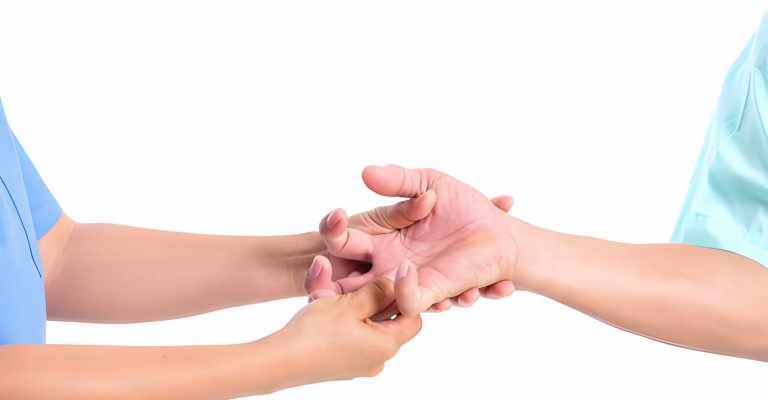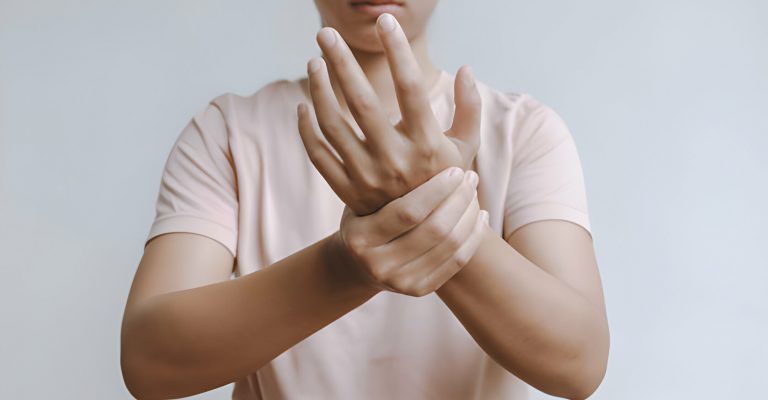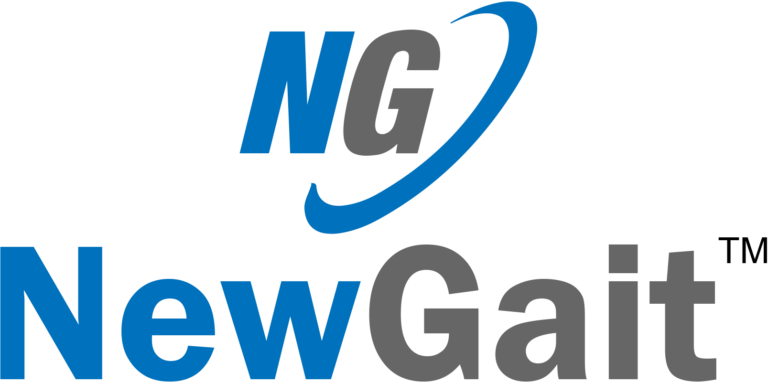A stroke occurs when the blood flow in your brain is cut off. This can create problems like weakness or loss of feelings. You might also lose control of certain parts of your body, such as your hand.
The location where those effects are felt will depend on which part of your brain was deprived of blood and how badly it was affected. Most of the time, one side or a specific part of your body, like a hand or arm, is affected.
Most strokes are ischemic strokes. This is the kind caused when an artery gets blocked, usually by a blood clot. The degree of impairment can range from slight to very severe depending on how long it takes for medical help to come and how much of the brain tissue is affected by the blockage.
Rehabilitation for Hand Paralysis from a Stroke
Stroke rehabilitation is quite a process, and problems associated with paralysis of the hand greatly impact an individual’s quality of life. There are a number of rehabilitation methods, and each can be performed in different ways for rehabilitation and results. This, therefore, is an elaborate guide that discusses and compares the different stroke survivors living treatment options for paralysis of the hand.
Traditional Physical Therapy
Traditional physical therapy (PT) is a mainstay in the management of hand paralysis. Aimed at restoring motion and strength, such a regimen normally entails exercises that stress repetitive motion, exercises employing resistance, and activities simulating the performance of daily living tasks to foster the development of motor skills and muscle response. Sometimes, it is crucial to maintain a range of motion at a joint or even increase movement.
For instance, a passive range of motion is a therapist’s tool for avoiding muscle stiffness and maintaining joint flexibility. Moreover, PT assists in re-establishing some neural connections through neuroplasticity, resulting in the brain’s ability to rewire itself.
Task-Oriented Training

The most important post-stroke rehabilitation method is task-oriented training, which focuses on the practical use of the affected hand in daily activities. It stimulates the routine performance of certain movements a number of times, targeting the integration of the paralyzed limb back into day-to-day tasks.
Task-oriented training based on exercise is patient-centered and frequently variable. Exercises are selected to assist patients in establishing goals and priorities. Task-oriented training through exercise is identical to practical tasks. Therefore, it is more prone to giving more considerable treatment gains in hand function via its encouraging assets.
Occupational Therapy
Occupational therapy (OT) works hand-in-hand with PT but focuses on the practical aspects of daily living. It helps people adapt to the new level of hand function, with a strong focus on restoring independence.
This may involve training in using adaptive equipment, making changes in the home environment, or learning ways to perform personal care, cook, and do other basic daily life activities. OT practitioners also involve the client in task-oriented training, which can lead to recovery of hand movement by using real-life challenges in the motion.
Orthotics
External aids like splints and braces, which help stabilize the hand and improve its functions, as well as other therapies, can enable this. In most cases, these are combined with other therapies to stabilize and mobilize affected joints and thus prevent post-stroke contractures from becoming fixed in the hand.
Hand orthoses, also known as hand splints, are wrist braces for weak or unstable wrists and finger splints to prevent contracture or proper alignment of the fingers.
Technology-Enhanced Innovative Treatments
Innovations in stroke rehabilitation remain ever forthcoming, some in treatments that give technology an edge, bringing new hope: robotics and virtual reality (VR) systems offer engaging and intensive therapy options.
Robotic gloves and arms guide movements with repetitions, which are key to motor learning. On the other hand, VR provides patients with an immersive environment to play with their hand movements in game-like environments, which may be more interesting than traditional exercises.
Another novel approach is the electrical stimulation of muscles (neuromuscular electrical stimulation, or NMES). This includes activating muscles and nerves with electrical currents, which would initiate movement and possibly promote re-training of muscle control through activation of neural circuits—a form of exercise to be performed when active movement is not yet possible.
In the same train of thought, transcranial magnetic stimulation (TMS) and transcranial direct current stimulation (tDCS) are non-invasive approaches to modulating neuronal activities. Some studies also look promising in the context of recovery from a stroke since they have synergic effects with traditional therapies when they are undertaken concomitantly.
Constraint-Induced Movement Therapy (CIMT)
Constraint-induced movement Therapy (CIMT) is a form of rehabilitative intervention for the upper limbs in which the motor ability of the non-affected hand is physically restricted by using a mitt or sling. It is based on the concept of “forced use,” where the patient is forced to perform tasks with the paralyzed limb.
CIMT will induce brain adaptation and improve fine motor skills with the affected hand and hence can lead to significant functional gains. However, due to its intensive nature and contraindications of certain levels of paralysis, it may not be relevant for all.
Mirror Therapy
Mirror therapy is a novel use of visual feedback to trick the brain into making it seem that the paralyzed hand is moving. A mirror is placed between the paralyzed and unaffected hand, and the movements are safely synchronized to create an alias illusion of the paralyzed hand copying the same movements of the healthy hand.
This illusion may sometimes “awaken” sensory and motor pathways in the brain, reducing paralysis and improving hand function.
Integrative Modalities and Supportive Care
In addition to the recognized treatment, integrative modalities such as acupuncture, massage, and biofeedback may have supportive roles in rehabilitating hand paralysis. Though these are not leading treatments, they can offer relief from secondary symptoms such as spasticity, pain, and emotional stress that often follow stroke recovery.
Elaborate care plans may involve counseling and support groups to deal with the psychological aspects of stroke recovery, which can bring out positive results at large for rehabilitation.
Surgical Intervention

Surgical measures are considered in special cases where the recovery achieved through neurological rehabilitation alone will not suffice. Tendon transfer, nerve grafts, or neurolysis procedures are a few of the procedures that can restore a certain extent of functionality to the paralyzed hand.
A tendon transfer redirects tendons from functioning muscles to those left paralyzed by a stroke to restore movements. Nerve grafts bridge damaged pathways so that electrical impulses can bypass affected areas. At the same time, neurolysis releases entrapped nerves that may enhance hand function.
Surgical methods may prove highly beneficial in providing long-term relief. Still, they usually entail a long recovery period and the risks of all invasive procedures. Hence, they should be chosen only after considering and weighing the context.
Pharmacological Options
Medications are adjunctive in hand paralysis. None of the medications can directly cure the paralysis. Still, some drugs directed at general recovery from stroke might indirectly be of benefit to the hand. Muscle relaxants and antispasmodic drugs can help reduce the muscle stiffness and spasticity usually found in the paralyzed limbs, thus increasing the effectiveness of the physical therapies.
Furthermore, a recent body of research has implicated some neurotransmitter-modifying medications that might lead to better recovery, along with neural plasticity and motor relearning. Healthcare providers should, however, monitor the pharmacologic mode of treatment with care due to the adverse effects that may be set off by other medications and the patient’s personal condition.
Acupuncture
Acupuncture can sometimes be regarded with suspicion, but new studies indicate that it could very well turn out to be a very positive alternative for all those patients who are hemiplegic, that is, partially paralyzed. The procedure involves gently inserting slender needles within the exact sites and conduits on the body.
This process is more potent with the electric current that passes through the needles, an application commonly called ‘electroacupuncture.’ Electroacupuncture sends signals to your brain and body to react. Suppose you connect this to physiotherapy or a solid workout back at home. In that case, you’d be able to significantly boost your recovery.
The key here is to activate your brain with this stimulation. This signals your brain to rev up your body and get ready to go again. But then again, keep in mind that acupuncture is not for everybody. It is better to discuss this with your doctor or therapy squad before trying it out.
To Sum Up
Each stroke survivor has a unique recovery path and, thus, personalized therapy regimens. Some of the same scientists and medical professionals have continued to work together to devise one of the most customized paths to re-acquire hand function. Research and innovations in stroke rehabilitation are continuously changing perspectives and have a positive impact on life after a stroke with hand paralysis.


